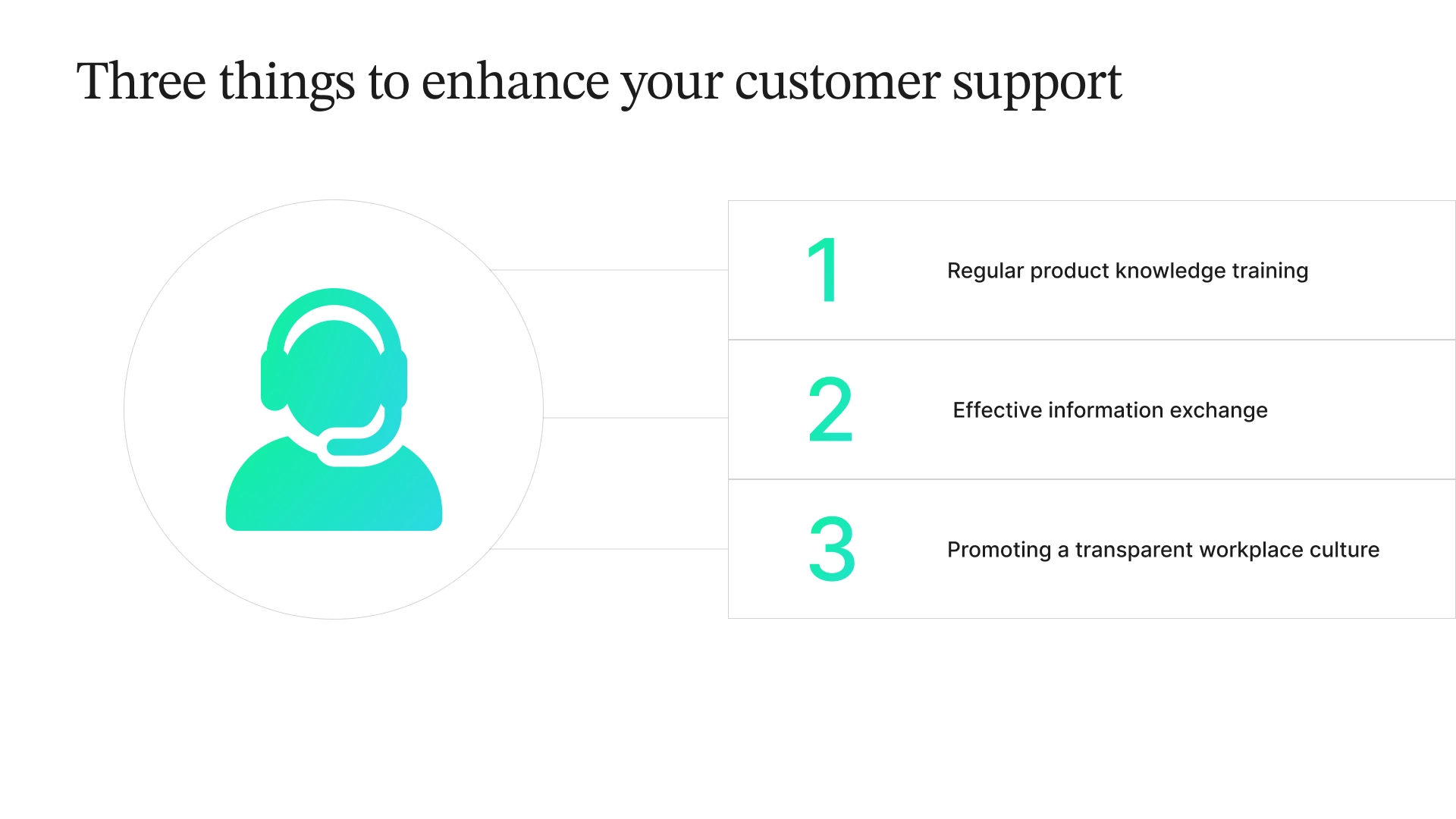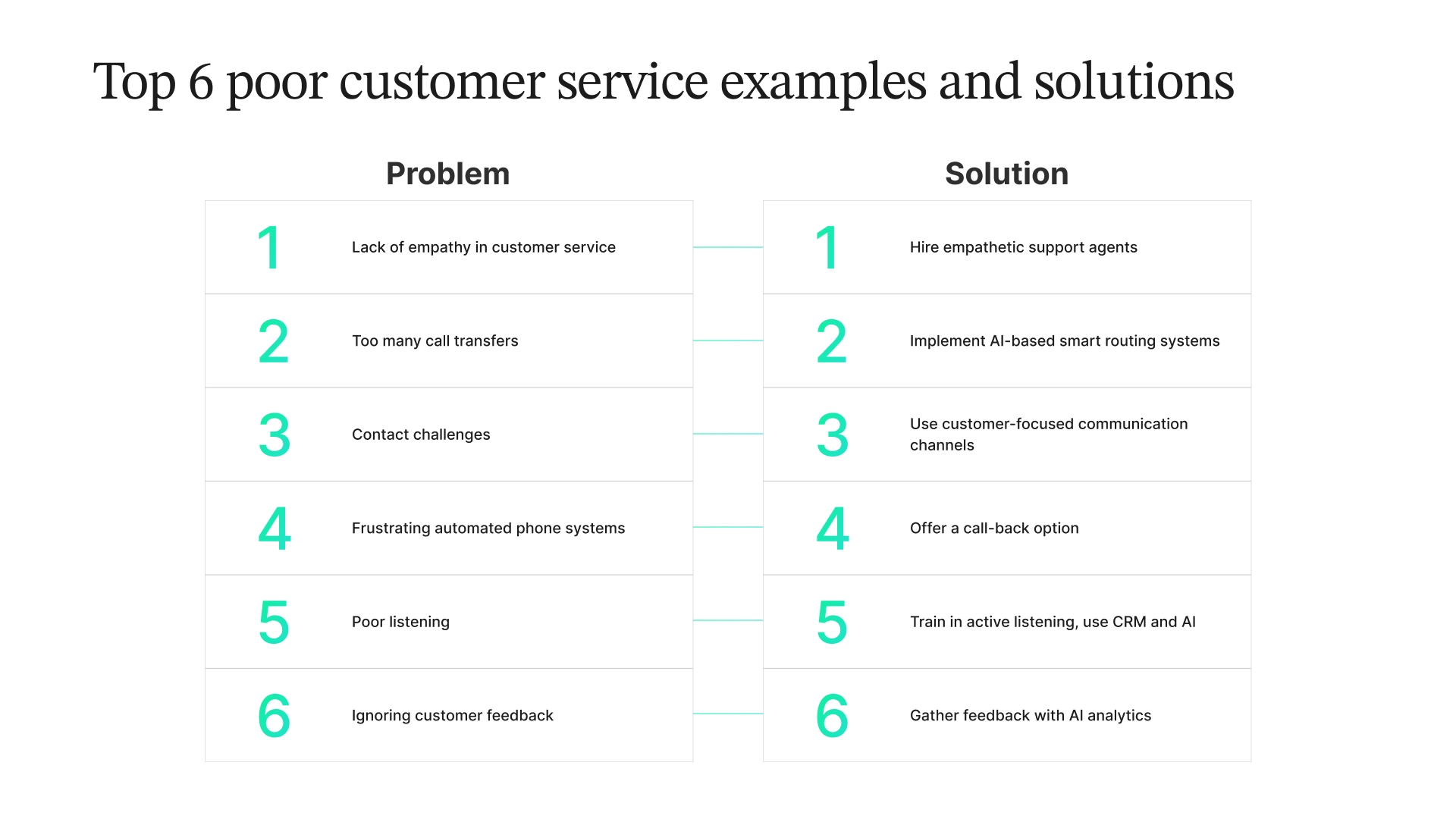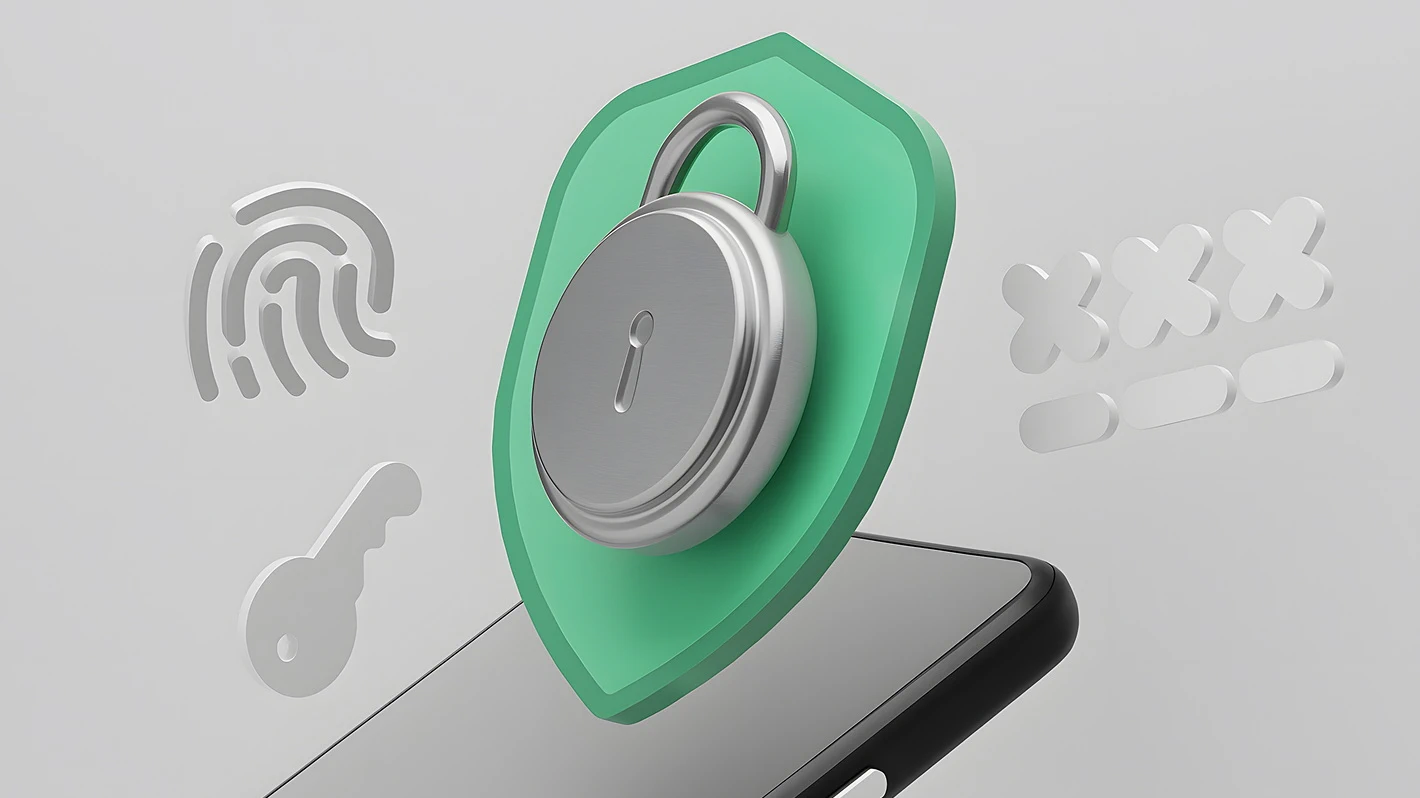Customers form the core of every business. Even if your product is the best in the world, but your customer support team is not ready to convey its value and great attitude to consumers–all the efforts are meaningless. Bad customer service experiences can significantly damage a company’s reputation and success.
Business leaders know how important it is to provide exceptional customer service to be better than your competitors, and to make your customers “yours”. It does not need to be a specially elaborated strategy you plan to implement for one of your projects, it is more about becoming closer to your customers which should be an integral part of your brand in every interaction. This commitment is a driver of a business’s growth.
The statistic of 2023 says that 61% of consumers have turned to a competitor following a bad customer service experience. Businesses in any niche need to be more customer-oriented and supportive to deliver high-quality CX. How can your business consistently provide outstanding customer service? This article includes real-world poor customer service examples, and consequences of bad customer service and offers insights and tips on avoiding these pitfalls.
What is Bad Customer Service?
Poor customer service occurs when a business does not meet expectations regarding service quality, responsiveness, or the overall experience for the customer.
To maintain high performance, your contact center must prioritize excellent user assistance as its core principle. Relying solely on initial basic training for agents and anticipating exceptional service in the long term may lead to disappointing results and potential costs.
If your support team isn’t hitting the mark, it could be trouble for your brand’s image as well. Nowadays, unhappy customers often share their frustrations on social media, which underscores the importance of social listening and social feedback tools. According to recent research, an average customer shares their positive service experiences with about 9 people, whereas they are likely to tell 16 people about a negative experience. So, paying attention to these issues in our digital world is important–they can’t be ignored as well as these twelve bad customer experience examples below.
12 Examples of Bad Customer Service
Let’s face it, no business is perfect. Mistakes happen, especially when dealing with customers who aren’t happy. Calming down a really upset customer is tough, and customer service reps have to be careful not to make things worse. Even the top brands can mess up in customer service if they lose sight of what the customer needs. To keep these slip-ups from hurting their business, companies need to understand what poor customer service is and how to steer clear of it. We have collected typical examples of bad customer service and offered the best ways to avoid these situations and prevent customer service nightmares.
Your customer support team is ineffective
You definitely don’t want a customer support team that’s clueless. Take a moment and imagine such a situation: you call your insurance company to check on your policy status. You’d expect the agent to quickly access your information and understand it. If they can’t even answer basic questions about your policy, that’s a big red flag.
A customer service team that doesn’t know what they’re doing can’t offer proactive help. This leads to a damaged brand reputation and even more complaints from clients.
Better approach: Equip your team with knowledge
Here’s how you can boost your customer support team’s effectiveness:
- Regular product knowledge training: Make sure your team is up-to-date on all your products, and this should be a company-wide initiative.
- Sharing crucial information: Keep your entire customer service team in the loop about common customer issues and effective solutions.
- Promoting open communication: Encourage a culture of transparency within your team to better understand and meet customer expectations and needs.

Need for a better understanding of the customers’ problems
Typically, customers call if they have particular complaints, and if an agent is professional, they can not behave indifferently or easily in this case. But let’s be realistic, no business can completely escape customer complaints. Instead of avoiding them, it’s better to equip your team with the skills to handle these situations, avoiding poor customer service. Your support team should understand what your customers are going through and show genuine empathy.
Approximately 45% of consumers are more likely to purchase from a company that demonstrates empathy. This statistic highlights the role of empathy in establishing brand loyalty and encouraging repeated engagement.
Better approach: Embed empathy in your company culture
Businesses focused on customers don’t just have staff who are good at smiling; they genuinely put customers first in all they do. For a support team, this means:
- Selecting support agents who naturally empathize is a key factor in hiring. Top teams have people who love helping and interacting with customers. Consider asking targeted interview questions to find these qualities.
- Creating a culture in your contact center that prioritizes solving problems over quick calls. Agents should have the freedom to take the time needed to resolve issues, without the pressure of hurrying through calls.
- Using tech tools that offer proactive support, like chatbots that pinpoint frequent issues. When agents can anticipate problems, they’re better prepared to assist clients with more complex needs and effectively prevent the escalation of issues into a bad experience with customer service.
Endless passing around in customer calls
Transferring customers to other agents is sometimes necessary. However, a high rate of call transfers can annoy your customers and may even push them towards your competitors.
Call transfers often occur for several reasons beyond the initial customer service agent’s inability to resolve the issue. Sometimes, a call might end up with the wrong department or person. In other cases, it’s necessary to escalate the call to a more experienced staff member. Also, there are situations where the customer requires specialized help that the first agent is not equipped to provide.
While you can’t eliminate call transfers entirely, it’s important to try to reduce them. Why? Because transferring calls repeatedly leads to a poor customer experience. Customers dislike repeating their issues to different agents and waiting longer than necessary. Also, it’s inefficient for your business, as resolving issues becomes more time-consuming and frustrating when multiple agents are involved.
Better approach: Improve your call routing
To avoid unnecessary transfers, make sure calls go to the right person from the start. Technology can help with this:
- Location-based routing directs the caller to the right department based on their location.
- Status-based routing uses customer information to route them to the appropriate department.
- Campaign-based routing connects customers to agents specialized in specific marketing offers they’re calling about.
Customers struggle to contact the company
When it’s a challenge for customers to reach out to a company, they might just stop trying to seek help and find it the worst customer experience. This can leave their issues unresolved. To offer an exceptional support experience, it’s crucial to ensure that users can easily access the information they need, regardless of the communication channel they choose.
It’s essential to offer versatile channels of communication to users who are extremely demanding today and have different preferences. According to Zendesk, 40% of consumers cited having “multiple options for communicating” as the most important feature of a company’s customer service department.
Better approach: Use customer-focused communication channels
To improve your customer service, make sure you’re available on the communication channels your customers use daily. This involves:
- Be present on the platforms your customers prefer. Offering support across multiple channels caters to the modern consumer, who is often attached to their smartphone.
- Choose software for effective tracking and easy transitioning between different communication modes. This integrated approach lets customer service reps switch from emails to calls effortlessly within the same system, especially for complex issues.
- Different from traditional CS channels, messaging lets customers interact at their convenience. It also enables agents to handle multiple customer queries simultaneously, leading to faster resolutions.
Frustrating automated phone systems
It’s hard to say what’s more exasperating: being on hold for what seems like forever or trying to report an urgent issue, but the automated system keeps looping you through unhelpful options, never connecting you to a human who can help.
These phone systems often drag customers through a maze of voice commands, ending with them being put on hold, only to potentially have their call disconnected.
Better approach: Offer a call-back option
Since waiting is something customers generally dislike, and that relates to bad customer service, it’s better to avoid making them do so.
- Instead of having them endure endless hold music or struggle with voice commands, provide a call-back service. This way, they have the option to receive a call back rather than staying on the line.
- Modern interactive voice response (IVR) systems manage customer requests. They allow users to speak to a voice recording and route calls based on their responses. IVRs also guide callers to prerecorded answers for common questions.
- Using an AI-powered chatbot can enhance CS by efficiently handling routine queries. However, it’s important to use them effectively. For optimal chatbot functionality, integrate CRM data to provide context-aware assistance, and maintain a human touch by seamlessly transitioning to live agents when necessary.
The issue of inattentive listening
Customers expect to be heard the first time they explain their problems and to have them resolved during their first interaction; otherwise, it’s all about bad support. However, this is a common problem many CS teams face today, as evidenced by the First Call Resolution (FCR) rate, a crucial KPI in call center performance. Every business should remember that higher FCR rates typically lead to higher CSAT scores.
While some situations, like complex issues or wrong department transfers, may warrant a repeat explanation, it becomes frustrating when it’s due to poor listening or note-taking by the support team.
Better approach: Enhanced listening strategies for customer support
To prevent this, customer support agents should focus on genuinely engaging with the customer. This can be achieved by:
- Asking questions that demonstrate a clear understanding of the customer’s concerns.
- Avoiding assumptions about what the customer might say next, instead focusing intently on their current words.
- Minimizing distractions to better focus on the customer’s queries.
- Learning and practicing active listening skills will help to clear away the examples of poor customer service.
- Refrain from pre-empting the direction of the conversation to avoid premature or incorrect responses.
- Using a CRM system for note-taking and briefing other representatives on the issue.
Overusing the website as a solution
Contact centers often direct customers to the company website instead of providing direct assistance over the phone. This approach is problematic because many customers have likely already tried to find answers on the website and failed. Being instructed to hang up and resolve their issue alone can lead to frustration especially when it becomes evident that the business fails to meet the basic expectations of support and assistance.
Better approach: Help customers right on the call
Find these simple ways to make our call center support even better for our customers:
- When someone calls for help, they’ve probably already checked the website and didn’t find what they needed. So, let’s try to fix their problem right then and there on the phone.
- Instead of just telling your customers to read the FAQ section, why not use that info to help them while chatting?
- Keep track of who’s telling callers to just check the website. This helps us make sure we’re really helping people and not just rushing them off the phone.
Unfriendly and aggressive behavior
It’s normal for call center agents to have ups and downs. Sometimes, they might not feel like talking to another customer. That’s just part of life. But it’s super important they stay professional and polite on every call. Even when customers are not so nice, our agents shouldn’t lose their cool. The goal is always to figure out the customer’s problem fast and handle it without getting angry. Remember, the signs of poor customer service include, first of all, aggressive communication, unfriendly behavior, and reluctance to help.
Better approach: Keeping customer interactions friendly and efficient
It’s crucial that CS team members remain composed and approachable in every interaction:
- Make sure agents keep calm and stay friendly, no matter what. We’re in the business of solving problems, not arguing.
- Use scorecards to monitor how your agents are doing. Are they being warm and welcoming? Are they introducing themselves and really listening to what the customer needs right from the start?
- It’s important to wrap up calls by asking if there’s anything else we can help with. It leaves a good impression and makes sure we’ve covered everything the customer needs.
Outdated policies and rules
Sticking to old or inflexible policies can reduce the effectiveness of customer service. It’s like clinging to ways that don’t fit today’s world. These policies might be there because they’re what we’re used to, or they might seem too tough to change. For instance, if we’re taking 48 hours to respond to customers just because “that’s how it’s always been,” we’re missing a beat. In a world full of tech and smart solutions, why not aim for quicker responses? This can be a good solution not to fall into the trap of providing the worst customer service, where slow responses often lead to increased frustration and dissatisfaction.
Better approach: More flexibility in policies
It’s time to look closely at each policy and see if it’s helping or hindering our relationship with consumers. We should be open to changing things up if it means making our customers’ experiences better. Here are some steps to get there:
- Check each policy closely. If it’s making things harder for customers, let’s change it or get rid of it.
- We should choose policies that put our customers first. Policies should make things smoother, not harder.
- Give our team the freedom to make decisions that benefit the customer and the company, even if it means bending some rules.
- Keep rethinking our policies. What worked yesterday might not be the best approach today. Let’s stay adaptable and responsive to our customers’ needs.
Failing to monitor CS effectiveness
A lot of businesses don’t take the time to check how their customer support is doing, and that’s a big mistake. Many think that assessing CS isn’t necessary, but the truth is, that the quality of customer service is closely linked to the company’s success. Without measuring customer service with clear goals in mind, there’s no way to make it better.
Better Approach: Make Regular Evaluations of CS
You should make it a priority to regularly check on your customer service. It might be tough, but the insights you get are invaluable. Here’s how you can make sure your client service is top-notch:
- Use measures like the Customer Effort Score (CES) to see how hard customers have to work to get their issues solved. Look at the Customer Satisfaction Score (CSAT) to evaluate how they feel after talking to your service team. And don’t forget about the Net Promoter Score (NPS) – it tells you if users are likely to recommend your brand to others.
- Regularly collect and analyze feedback. This helps you identify specific areas that need work or improvement in your CS.
Overstepping boundaries in personal data handling
Customers value their privacy differently. Some share freely, while others are more private. It’s important to respect this when handling their personal information. A classic example is announcing a declined credit card in public. This can be embarrassing and may deter customers from returning.
Better Approach: Respecting Customer Privacy
- Train staff to handle sensitive situations properly. In cases where personal details are discussed, staff should be trained to do so in a low, respectful tone, ensuring the conversation isn’t overheard by others.
- In situations like a declined card, allow the customer to resolve the issue with dignity, like trying another card or stepping aside without drawing attention.
Overlooking customer feedback
In a world where social media and quick communication rule, not listening to your customers, especially when they have something negative to say about your brand or just bad customer service is a big no-no. Users often decide where to spend based on what they and others say about a brand.
Any feedback about negative customer experience is a goldmine for improving CX, but sadly, many businesses don’t give it the attention it deserves, leading to potential losses. Several years ago customer feedback was only used for marketing and not to make any real improvements. A recent statistic indicates that 83% of consumers have participated in at least one survey over the past year. This suggests that businesses are actively seeking customer feedback.
Better approach: Actively engage with customer feedback
It’s crucial to not just collect but also to thoroughly analyze and respond to negative feedback about bad customer service. Reach out and fix issues in a way that satisfies your customers.
Here are some ways to effectively gather and utilize customer feedback:
- Regularly ask for feedback through surveys.
- Make it easy for users to share their thoughts through email or forms on your website.
- Have direct conversations with consumers to get in-depth feedback.
- Acknowledge and address feedback on your website and platforms like Google Business Profile.

Say Goodbye to Bad Customer Service with Helpware
In a dynamic and evolving marketplace, your clients continuously seek enhanced and more memorable experiences that distinguish your services from negative customer service encounters they may have faced with other businesses. To offer them unforgettable CX and enhance the value of your services or products like never before, reach out to Helpware today! Our unique expertise and solutions for different industries and audiences are invaluable. We know that every interaction counts, know how to measure it, and show you better results. Build new relationships with Helpware.











